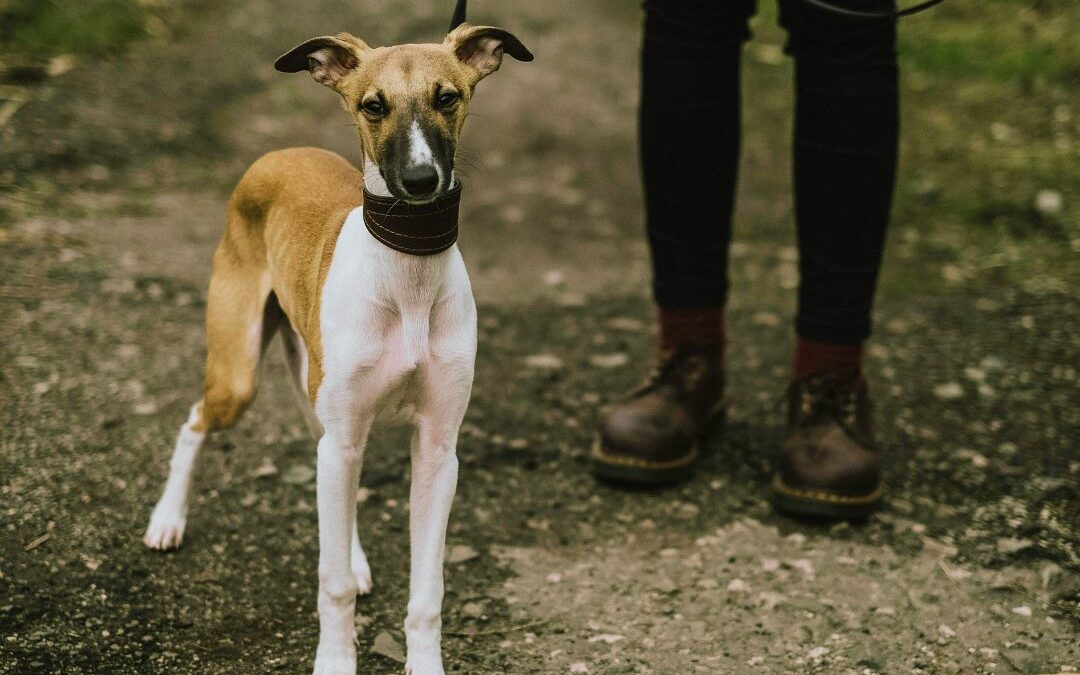If you’re new to having a dog in your life, you might think that taking a dog for a walk should progressively get easier and more pleasant for you and the dog as they age. But this isn’t necessarily true. Dog walking is a skill for both of you, and working on it intentionally from the beginning is important. We’re here to cover some common dog walking problems and provide some tips to deal with each.
Before moving on to walking, you can check out how to pick out the right collar for your dog and how to pick out the right leash.
Onward…
Common dog walking problems
The leash
There are all kinds of things that can happen with the leash that will disrupt a peaceful and fun walk for you and your dog. Firstly, they can get over excited about the leash itself. This can happen right when you take it out; they start to jump and bark and climb on you.
After the leash is on, this can also look like biting the leash, playing with it, using it for games, and winding the leash around themselves and around you.
Then there’s the pulling of the leash. This is one of the most common dog walking problems, and it needs to be dealt with early on or you’ll need to go to a trainer. (Like Sundance Retrievers training!)
Tips for leash excitability:
- Make the leash something they’re used to seeing so it doesn’t cause such an excited response when you pull it out. Set it out where the dog can see it all the time.
- Occasionally hold the leash when you’re not intending to go for a walk.
- Take this a step further and put the leash on your dog without going for a walk.
- Make sure to provide positive reinforcement when they don’t go bonkers in response to the leash.
Tips for pulling on the leash:
- The number one rule: if the dog is pulling, stop walking. Do not let the dog walk while pulling the leash.
- Plant your feet and wait until they return to your side and sit. Take a moment of calm and then continue to walk.
- Be patient. This one can take time. And stay consistent.
Refusing to walk
This might look funny when you see it, but when you’re walking, nothing is more frustrating than a dog who refuses to walk. Especially if that dog is large.
Even if your dog is small enough to pick up, unless there is a good reason to do so, you might not want them to get used to this level of service. ((ha))
Tips for refusing to walk:
- If this is a new thing with your dog, the first thing you want to do is rule out any health issues. But usually this is behavioral.
- Your dog might be stressed or anxious about something in the environment so make sure they are feeling safe.
- And if your dog is simply lazy, this might be a reason to take shorter walks.
- Remember that some breeds have lower energy output needs.
Excessive scavenging and sniffing
Picking up things on a walk can be funny but it can also be dangerous. You really don’t know what your dog is putting in their mouth.
And excessive sniffing can be downright annoying. Remember that dog’s are basically walking noses so try to be patient with some sniffing. We’re talking about that dog who can barely move two feet at a time because they have something new to sniff.
Tips for excessive scavenging:
- Teach your dog to focus on you while you’re walking.
- Teach them commands like “leave it” and “drop.”
- If this becomes a serious issue, talk to your vet about muzzle options for walking.
Tips for excessive sniffing:
- Sniffing is a great activity to keep your dog’s mind sharp, so you might want to take different kinds of walks. For example, take your dog for an evening walk that is mostly for sniffing and let them have at it. (Read about sniff walks here.)
- On regular walks, give your dog positive reinforcement when they go for a bit without sniffing.
- Sniffing is not something that should ever be punished.
Do you have other issues with walking? We’d love to hear so we can help!

